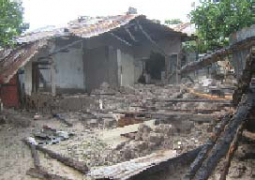He said CBPP is a deadly disease, which could wipe out 50 per cent of the country’s national cattle heads if appropriate measures are not taken.
Mr Fofana was speaking at the handing-over of vaccination campaign materials and equipment to the department by the FAO recently.
Therefore, he added, when the outbreak of the disease occurred in the country in 2012, FAO and the Gambia government took immediate action and jointly developed a technical cooperation programme called FAO TCP/GAM/3405(E).
The purpose was to help to immediately control the spread of CBPP within the country and, in this regard, the TCP provided vaccines, materials and other equipment to enhance the diagnostic and technical capacity of the department to effectively control CBPP.
Apart from materials and equipment, financial resources were provided by FAO to cover other logistics of the campaigns.
Furthermore, financial resources were also provided for the sensitization of their partners and other stakeholders.
To this effect, two successful vaccination campaigns have been conducted where close to 300,000 heads of cattle were vaccinated in 2013 and 2014.
Dr Fofana announced that another campaign is being planned for implementation in the early part of 2015.
He expressed appreciation and gratitude to the FAO for providing them not only materials and equipment, but also financial resources to conduct the past, present and future vaccination campaigns.
He also thanked the Gambia Livestock Marketing Agency (GLMA), PROGEBE and the Ministry of Agriculture for their substantial support in their endeavour to fight and eliminate this deadly disease of cattle from the country.
GLMA Director General Dr Demba Jallow, in his remarks, said that following the outbreak of CBPP in the country in late 2012, a series of meetings were organised between stakeholders in the livestock subsector and the government, which culminated in the development of a TCP between the government and the FAO in early 2013.
According to Dr Jallow, the control and prevention of CBPP continues to be a collaborative effort between the Gambia government and FAO, and requires the full cooperation of livestock farmers and traders in both The Gambia and Senegal.




